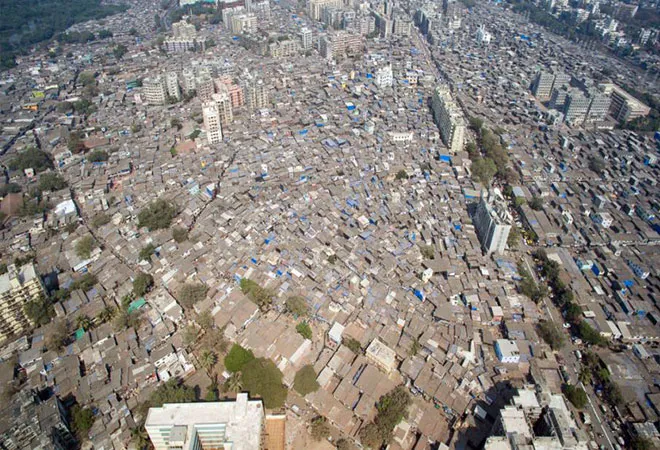
The Indian government’s promise of improving people’s quality of life through its rural and urban development missions may not be easy to fulfill. Inadequate attention to rapidly transforming areas of the country is an important reason for this.
In rural areas adjoining populous cities, changes are occurring due to the impact of urbanisation. These trends are expected to continue, and are seen in the form of rising population and buildings, loss of open spaces and farmland, changing land uses and occupational patterns.
Being a rural area, the legal provisions and governance arrangements for regulating economic and building construction activities are inadequate and inappropriate to cope with the challenges posed by urbanisation. Absence of required mechanisms is leading to emergence of chaotic conditions and miserable living conditions.
At many such places, basic services provided by rural governments (panchayats), such as drinking water, sanitation, electricity are under severe stress, as a larger population requires these essential needs. Huge quantities of solid waste are generated, and its collection and disposal lags behind.
The private real estate entities and builders operate fearlessly in the area, and exploit the opportunity to construct shops and additional floors in buildings, to accommodate needs of the growing population. Structural changes are carried out haphazardly due to absence of development controls and building byelaws. There is contestation over public spaces because of vested interests of real estate agents and migrants, and the lives of natives are adversely affected.
Unauthorised construction affects the natural flow of rainwater and causes local area flooding during monsoon season. Another problem relates to mobility. The narrow walking lanes are used to park and ride motor vehicles. Environmental pollution from vehicle emissions, as also from illegal construction, is common with significant impacts on human health.
Such problems are witnessed in many rural areas around populous Indian cities, where the living conditions of residents are abysmally poor. The population is growing, rural character is changing, demand for goods and services is increasing, but governance systems remain traditional.
It appears, serious efforts are not being made to take stock of the changing area characteristics, nor is importance given to improve the quality of local level governance in the light of changing conditions. A rural administration status granted in the past to many such areas under the law by state governments continues, however, the rural local governments are not empowered and equipped sufficiently to handle the spatial and economic transformation.
The perception of governance is that rural areas require a rural reform approach, while urban areas need an urban reform one. Thus, most countries use a set of norms, or criteria, to assess local area characteristics, which forms the basis for assigning the rural and urban administration status of settlements. The criteria vary across countries, and are based on country-specific population and development characteristics. This helps to put in place the correct type of government, i.e., panchayat or municipality. For example, in the US, which has the world’s third largest urban population of 270.68 million, after China and India, agglomerations of over 2,500 inhabitants with population density of over 1,000 persons per sq. mile are classified as ‘urban’.
Similarly, India’s census office, under the national Home Affairs Ministry, declares an area as ‘urban’ based on three criteria, i.e., any settlement having minimum of 5,000 persons, at least 75 percent of male main working population engaged in non-agricultural pursuits, and population density of at least 1,000 persons per sq. mile. Settlements not fulfilling these three criteria are declared ‘rural’ by the census office. In counting India’s urban population, the census office includes population of settlements declared ‘urban’ (statutory towns) by state governments, as well as those (census towns) that fulfil the three criteria.
Ironically, rural and urban development being state subjects, state governments do not rely entirely on census criteria, or suitable measurable parameters. Rather, ambiguous criteria are used, on which sufficient information is not available. The vague practice results in arbitrary decisions by state bureaucracies about which areas are to be classified as ‘urban’ and ‘rural’, irrespective of local area characteristics. This is an important reason for the local government’s failure in responding to the changing conditions.
Today, rural governments govern numerous settlements displaying urban characteristics in Indian states. Census data for 2011 show over 54 million Indians, or about five percent of the country’s total population, living in rural areas that meet the census criteria for an urban area, and the population of some rural settlements is over 100,000. Further, studies by World Bank and Joint Research Centre of European Union reveal that India is even more urbanised. Their estimates include urbanisation occurring on the peripheries of major cities, and are based on alternative measures, such as the agglomeration index, and growth of built-up areas as captured in satellite images.
Urban policy analysts observe that state governments resort to arbitrary practices to benefit from various nationally supported rural and urban financing schemes. Converting the status from ‘rural’ to ‘urban’ is also avoided for not applying strict urban laws pertaining to building byelaws, development controls, and taxation. The impact of unreasonable practices at the state level is seen in the poor quality of life.
What, then, could be done to ensure better living conditions in fast-growing, populated rural areas of India? The Housing and Urban Affairs Ministry has asked states to convert census towns into statutory towns, and set up municipalities in census towns, as urban governments are better equipped. Given India’s federal structure, this suggestion is not working well with states, as these prefer autonomy on state matters. Further, the census definition of ‘urban’ used since 1961 would require altering in the light of changing physical, socio-economic and development characteristics in states.
Ideally, states should use realistic parameters, values and remote sensing technology for measuring the actual extent of urbanisation. The parameters should take into account various quality of life aspects, which is not the present practice. Strong and resilient municipalities should be set up in fast-growing rural settlements displaying adverse effects of urbanisation. Increasing awareness about benefits of urbanisation would make state functionaries agree with this proposal.
The views expressed above belong to the author(s). ORF research and analyses now available on Telegram! Click here to access our curated content — blogs, longforms and interviews.




 PREV
PREV


